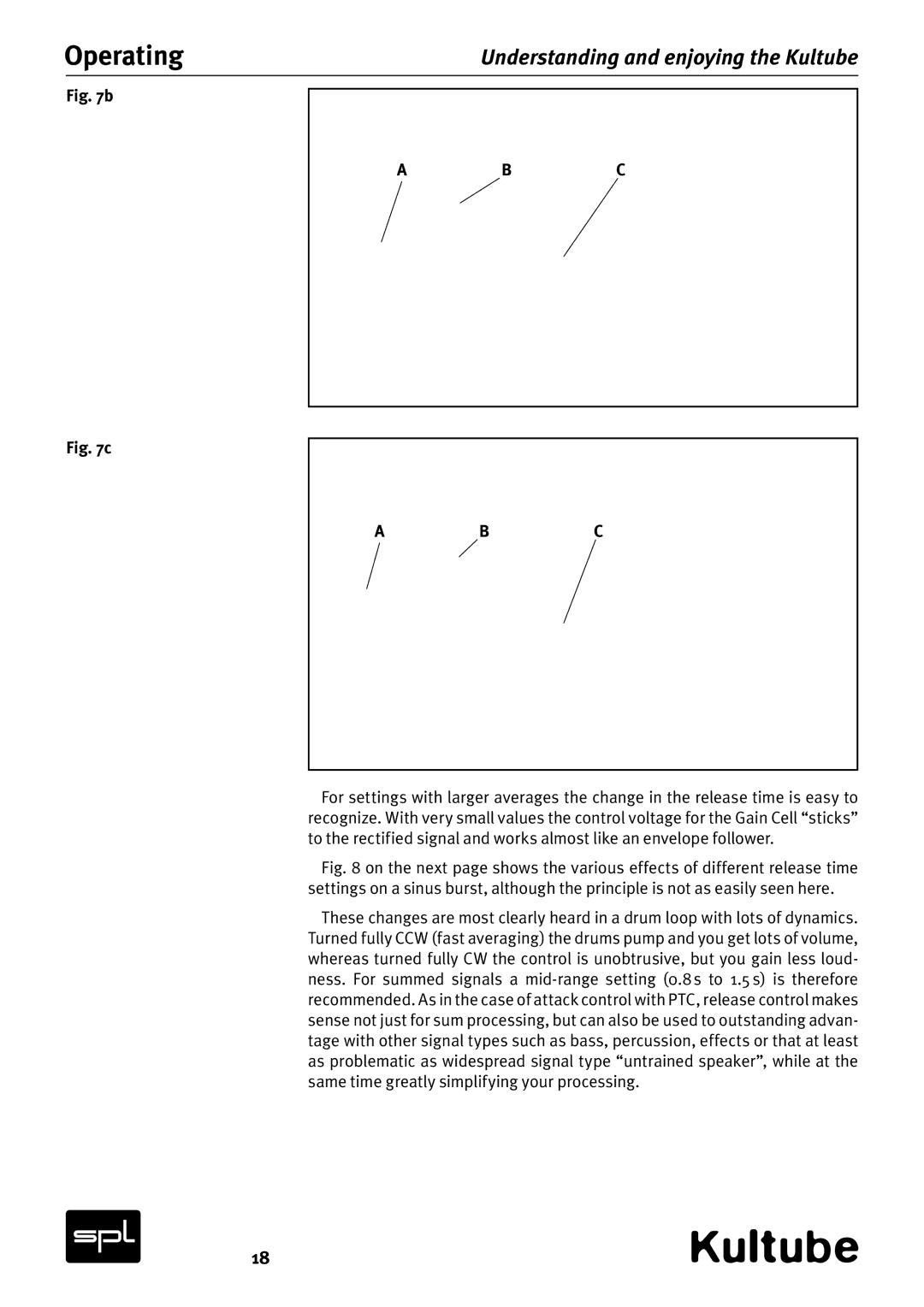
Operating | Understanding and enjoying the Kultube | |
|
|
|
Fig. 7b
Fig. 7c
ABC
ABC
For settings with larger averages the change in the release time is easy to recognize. With very small values the control voltage for the Gain Cell “sticks” to the rectified signal and works almost like an envelope follower.
Fig. 8 on the next page shows the various effects of different release time settings on a sinus burst, although the principle is not as easily seen here.
These changes are most clearly heard in a drum loop with lots of dynamics. Turned fully CCW (fast averaging) the drums pump and you get lots of volume, whereas turned fully CW the control is unobtrusive, but you gain less loud- ness. For summed signals a
18
